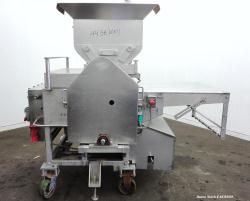Used Meat Equipment
Aaron Equipment has an inventory of reconditioned, unused, and used meat equipment. Aaron's meat equipment inventory includes meat grinders, patty formers, stuffers, vacuum fillers and more. Industrial meat equipment refers to the machinery and tools used in the large-scale processing, preparation, and packaging of meat products in industries such as slaughterhouses, meat processing plants, and food manufacturing facilities. These machines are designed for efficiency, consistency, and safety while meeting high production demands. If you are looking to sell your used meat equipment submit a request online or contact Erik Eichert at 630-238-7480.
Your Guide To Industrial Meat Equipment
Navigating the world of industrial meat equipment can be daunting, especially with the various machines available today. Whether setting up a new facility or upgrading existing machinery, understanding the key equipment in meat processing is crucial. This guide will help you explore the essential machines used in the industry, from meat slicers to bowl cutters and provide insights into their functionalities and applications.
Understanding Meat Processing Machinery
Industrial meat equipment plays a vital role in ensuring the efficiency and quality of meat processing. These machines are designed to handle large volumes of meat, ensuring consistency, safety, and speed in production. Let's dive into some of the most used equipment in the industry.
- Meat Slicer: A meat slicer is an indispensable tool in any meat processing facility. Its primary function is to cut meat into uniform slices, which is essential for aesthetic and practical purposes. Meat slicers come in various sizes and types, including manual and automatic, catering to different needs and production volumes.
- Key Features:
- Precision Cutting: Ensures uniform thickness for each slice.
- Adjustable Settings: Allows customization of slice thickness.
- Safety Features: Includes guards and safety switches to protect operators.
- Application Use Case:
- Precision meat slicers for deli and foodservice operations
- Key Features:
- Meat Grinder: A meat grinder minces meat into smaller pieces, which is essential for products like sausages, patties, and ground beef. Grinders range from small manual units to large industrial machines capable of processing several tons of meat per hour.
- Key Features:
- Versatility: Suitable for different types of meat, including beef, pork, and poultry.
- Different Plates: Offers various grinding plate sizes for coarse or fine mincing.
- Hygienic Design: Made from stainless steel for easy cleaning and maintenance.
- Application Use Case:
- High-capacity industrial meat grinders for large-scale production
- Key Features:
- Meat Smokers & Ovens: Industrial meat smokers are designed to infuse meat with a smoky flavor while preserving and cooking it. They operate by exposing meat to controlled heat and smoke generated by burning wood chips, sawdust, or other smoking materials. Industrial meat ovens are large cooking systems designed for baking, roasting, or steaming meat products.
- Key Features:
- Heating Systems: Use electric, gas, or steam heating elements. Allow uniform heat distribution.
- Humidity Control: Built-in systems to manage moisture levels for cooking processes like steaming or roasting. Helps retain meat juiciness and texture.
- Conveyor Systems: Continuous ovens include conveyors for automated cooking in high-volume production lines.
- Energy Efficiency: Designed for optimal energy consumption with minimal heat loss.
- Versatility: Some ovens can combine baking, roasting, steaming, and smoking.
- Application Use Case:
- Energy-efficient industrial meat smokers and ovens
- Key Features:
Specialized Industrial Meat Equipment
Apart from the basic slicers and grinders, specialized machines are designed to perform specific tasks in meat processing. These include vacuum fillers, ribbon blenders, and bowl cutters.
- Vacuum Filler: A vacuum filler fills casings with minced meat for products like sausages. The vacuum aspect ensures that air pockets are minimized, which can affect the texture and shelf life of the product.
- Key Features:
- Air Removal: Reduces air pockets for a better product texture.
- Consistent Filling: Ensures uniformity in product size and weight.
- High Efficiency: Capable of handling large volumes with precision.
- Key Features:
- Ribbon Blender: Ribbon blenders mix meat with other ingredients, such as spices and preservatives. They ensure the mixture is homogeneous, which is crucial for product quality.
- Key Features:
- Efficient Mixing: Ensures even distribution of all ingredients.
- Variable Speed: Allows control over mixing intensity.
- Easy Discharge: Designed for easy cleaning and product removal.
- Application Use Case:
- Stainless steel meat mixers for sausage production
- Vacuum meat tumblers for marinating and flavor infusion
- Key Features:
- Bowl Cutter: A bowl cutter, also known as a bowl chopper, is used to finely chop meat and other ingredients. It's essential for producing finely emulsified products like hot dogs and bologna.
- Key Features:
- High Speed: Chopping at very high speeds for acceptable emulsions.
- Adjustable Blades: Offers flexibility in the size and texture of the final product.
- Durable Construction: Built to withstand continuous use in industrial settings.
- Application Use Case:
- Automated meat cutting and portioning systems for processing plants
- Key Features:
- Meat Deboning Machines: Industrial meat deboning machines are specialized equipment used in meat processing facilities to efficiently separate meat from bones. They are commonly used in industries that process poultry, pork, beef, fish, and other meats for large-scale food production.
- Key Features:
- Automation: Reduces the need for manual labor, improving efficiency.
- Precision: Minimizes meat loss during the deboning process.
- Hygiene: Made from stainless steel and other food-grade materials for easy cleaning and maintenance.
- Speed: Can process large volumes of meat quickly.
- Versatility: Many machines can handle multiple types of meat.
- Application Use Case:
- Industrial meat deboning machines for poultry processing
- Key Features:
- Industrial-grade Meat Tenderizers: Industrial meat tenderizers are vital for meeting quality and consistency standards in modern beef processing. They help processors deliver tender, flavorful, and market-ready products efficiently.
- Key Features:
- High Processing Capacity: Designed to handle large volumes of meat efficiently. Suitable for continuous or batch operations in industrial settings.
- Adjustable Tenderization Settings: Adjustable blade depth, roller pressure, or tenderization intensity to suit various meat cuts and textures. Customizable for specific products, such as thin strips, thick roasts, or delicate cuts.
- Energy Efficiency: Optimized energy consumption to reduce operational costs while maintaining high performance.
- Integration Capability: Can be integrated into larger processing lines with conveyor systems, portioning machines, or packaging equipment for seamless operations.
- Application Use Case:
- meat tenderizing of beef
- Key Features:
Maintenance and Safety Considerations
Regularly maintaining industrial meat equipment is critical to ensuring longevity and safety. Proper cleaning, lubrication, and routine inspections can prevent breakdowns and maintain efficiency.
- Tips for Maintenance:
- Regular Cleaning: Ensure all parts are cleaned thoroughly after each use.
- Scheduled Inspections: Conduct routine checks to identify and fix wear and tear.
- Operator Training: Ensure all operators are trained in the safe and efficient use of the machinery.
- Safety Measures:
- Use Personal Protective Equipment (PPE): Operators should wear gloves and eye protection.
- Follow Manufacturer's Guidelines: Adhere to all operational instructions and safety protocols.
- Emergency Stops: Ensure that all machines have accessible emergency stop buttons.
Choosing the Right Meat Equipment
When selecting industrial meat equipment, consider production volume, product type, and budget. Investing in high-quality machinery can increase productivity and product quality. Is a continuous flow meat cooking systems for ready meals or possibly specialized hygienic meat conveyor belts for food safety compliance your priority? Here are a few considerations when making your purchasing decisions?
- Key Considerations:
- Production Needs: Assess the volume of meat you need to process.
- Budget: Determine your budget and look for machines that offer the best value.
- Brand Reputation: Choose reputable brands known for quality and reliability.
Top Meat Equipment Brands
While there are many reputable manufacturers, the market has shown a preference for the following brands:
- Marel, JBT Corporation, GEA Group, Bühler Group, The Middleby Corporation and many more!
Industrial meat equipment is a cornerstone of modern meat processing, offering efficiency, consistency, and safety. By understanding the functions and features of different machines, you can make informed decisions that enhance your production capabilities. Whether you're slicing, grinding, or blending, the right equipment can transform your operations and lead to a thriving meat processing business.
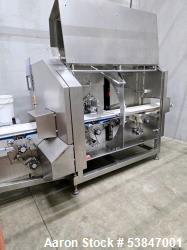
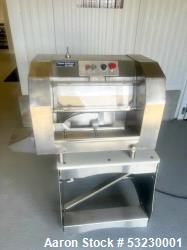

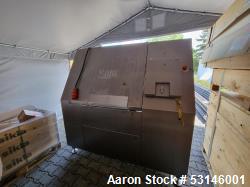
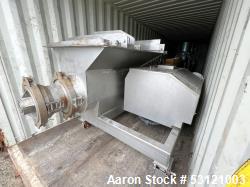
.jpg)

